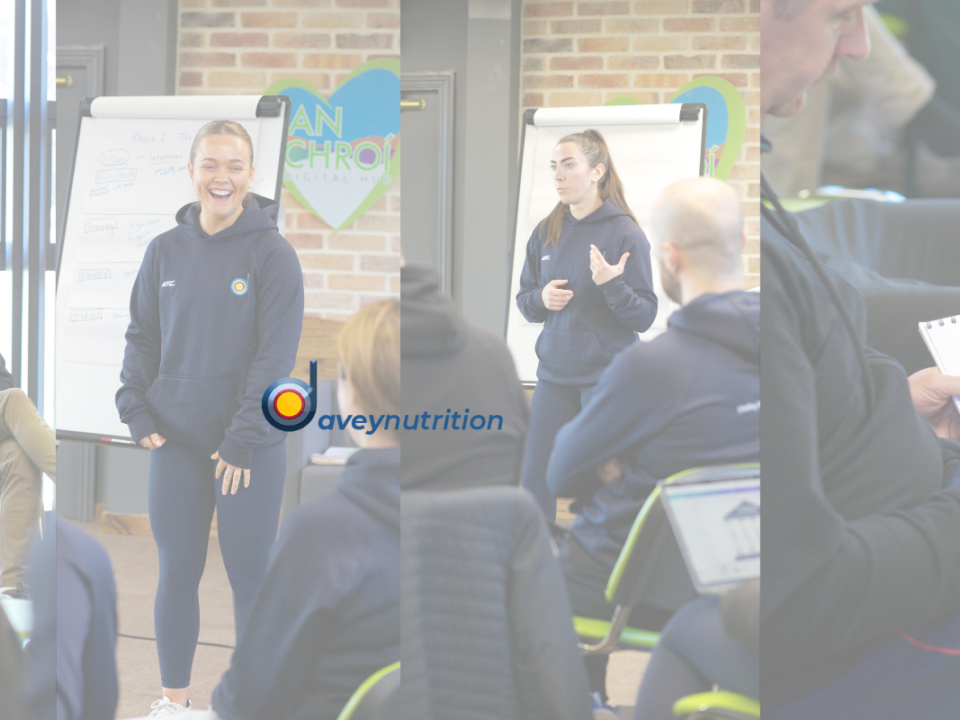
Chunky Mango Salsa
June 29, 2021
Hawaiian Chicken Rice
July 12, 2021
Chunky Mango Salsa
June 29, 2021
Hawaiian Chicken Rice
July 12, 2021Summary:
- What is caffeine?
- How does caffeine work in the body?
- What are the potential benefits of caffeine in performance?
- Is it beneficial for everyone?
- How do I apply this information?
Introduction – What is Caffeine?
Caffeine is a natural stimulant consumed daily by approximately 80% of the world’s population (Heckman et al., 2010). It is sourced from many different natural plants, namely the coffee bean, and is most commonly consumed through the widely popular beverages of coffee and tea. However, there is a range of artificially caffeinated products available nowadays including sodas, energy drinks, tablets, gels, gums, and sweets.
When it comes to performance, there are only a handful of supplements that have a concrete evidence base behind their potential to enhance performance. Caffeine falls into this exclusive category and is one of the most studied supplements available on the market. You might be surprised to know that only in 2004 it was removed from the prohibited list of the World Anti-Doping Agency (WADA), which has made the stimulant even more popular, especially in elite and professional circles (GSSI.web).
However, while the evidence is pretty consistent in favour of its potential for sport and performance, there are some downsides, especially for certain individuals, and we will discuss these in the next section.

How does caffeine work in the body?
Caffeine works primarily through reducing central fatigue (in the central nervous system) which simply means you’ll feel less tired when exercising. It is rapidly absorbed shortly after ingestion and blocks the effects of adenosine , by binding to the same sites in the brain (It can cross the blood-brain barrier; Fredholm et al., 1999).
Adenosine is a neurotransmitter (brain hormone) that increases throughout the day, acts on the brain, to prepare us for sleep. Because caffeine binds the same receptors in the brain, it actually impairs the effects of this transmitter. This results in reduced fatigue and tiredness.
This mechanism is the main way in which caffeine provides benefits for not only athletes, but office workers, parents and students alike. However, when it comes to performance specifically, caffeine also increases blood pressure, heart rate and adrenaline levels. These are all factors that help us to perform at higher intensity levels in sport.
Performance benefits of caffeine
Caffeine is widely used in performance for several potential benefits:
- Increased time to fatigue (endurance performance) –
- Improved reaction times and alertness
- Reduced perception of pain and exertion (higher intensities)
- Increased fat oxidation (fat-burning) during low-intensity exercise
(Guest et al.,, 2021)
The primary benefits for both team sport and track athletes will be the reduced perception of fatigue, during exercise. This should allow you to reach higher levels of intensity, and maintain them for longer periods. This is important for team sports (GAA, soccer, basketball) but also individual sports such as weightlifting, track and field, crossfit games, etc. (Goldstein et al., 2010).
Of course, everybody is well aware of the cognitive benefits (increased focus, alertness and attention) of caffeine, but you may wonder how these translate to a sporting context. Studies show that caffeine acts directly on the brain to also improve alertness and reaction times (Lieberman et al., 2002). This has the potential to benefit sports performance.” (Lieberman et al., 2002).

Does caffeine benefit everyone?
Definitely not. You might be or know someone who routinely avoids caffeinated products, claiming it makes them nervous, jittery, and may even cause a racing heart. While you might think this is nonsense, it is a well-founded phenomenon that a large percentage of individuals don’t react well to caffeine.
Why does this happen? It essentially comes down to the ability to metabolise caffeine in the liver. In other words, it is a genetic predisposition. Some individuals metabolise it more slowly, allowing it to exert its stimulatory effects for longer. Some people thrive when consuming caffeine, enjoying increased wakefulness and alertness.
However, many can experience the following:
- Increased blood pressure
- Palpitations
- Sweating
- Nervousness and jitters
- Anxiety
- Inability to sleep
As a high-performing athlete, these symptoms are the last things you want to experience when you need to perform at your best. This is especially true if you are in a sport where precision is crucial e.g. goal kicking, penalties, free throws. For example, take a final putt in a golfing championship. Athlete A (thrives with caffeine) uses it to their advantage, enjoying the heightened focus on the task at hand. However, Athlete B (negatively suffers from side effects) is experiencing anxiety and their hand is shaking uncontrollably. They miss the putt.
In addition to the negative stimulatory effects of caffeine, it can also be quite hard on the tummy, especially if consumed on an empty stomach. It is therefore recommended that you consume food prior to, or with caffeine.
It is, therefore, extremely important to assess your individual response to caffeine and make the decision on whether to incorporate it into your nutritional routine, but more on this below.

How do I apply this information?
Here are some tangible strategies for utilising caffeine as an athlete:
-
Test it out –
If you are not a habitual coffee drinker, or rarely consume caffeine, it is definitely not a good idea to try your first dose before the county championship game. Instead, try it before a gym session, or a light pitch session and see how you feel. When caffeine is consumed on an empty stomach, it can also cause GI issues in some individuals.
-
Measure it –
It is difficult to do this with coffee, as different blends can be highly variable in their caffeine content. Some people make the mistake of brewing a large pot and passively working through it throughout the day. That is not optimal. Be purposeful and specific with your caffeine usage. According to the position stand by the ISSN, the majority of benefits are seen at dosages of between 3 – 6 mg/kg (Goldstein et al, 2010) and no higher than this. A typical cup of coffee will contain anywhere from 120 to 250 mg of caffeine, which shows the variance in different blends, drinks
-
Consider a supplement –
Because of both the wide variance in coffee as well as the digestive side effects, many athletes require alternative methods of caffeinating. This can be through either capsule/tablet form or by using a sports/energy drink or gel. These all have fixed amounts of caffeine shown on their labels so you can be specific and experimental with the dose.
-
Time it –
Because of the rapid absorptive capacity of caffeine in the digestive tract, many athletes consume caffeine quite close to the onset of performance, but also during it. For most, the concentration in the blood tends to peak at around 30 – 60 minutes after consumption. The way in which you consume caffeine will have an impact on how fast it is available.
-
Be safe
– The safe daily amount is generally set at 400 mg, which is the equivalent of four cups of coffee. However, when applying the doses above (3 – 6 mg/kg) in a sporting context, sometimes one will exceed this amount. Therefore, it is very important to practice caution, start with the lowest dosages and only increase them if you feel it is necessary and can handle it.
-
Hydrate –
The stigma around caffeine being a potent diuretic (makes us pee) is not well-founded, especially in a sporting context (Goldstein et al,. 2010). But, it is important to keep hydrated as it may slightly promote diuresis (urination).
-
Experiment –
In the daveynutrition recipe hub we have a variety of caffeine recipes that are delicious, nutritious, and will perk you up for competition.
-
Work with an expert –
At daveynutrition, when you sign up, you gain unlimited access to our panel of experts on call through email, live chat or messenger form to answer any questions or advise you on topics like caffeine.
References:
- Spriet, L.L., CAFFEINE AND EXERCISE PERFORMANCE: AN UPDATE. GSSI.web
- Heckman, M.A., Weil, J. and De Mejia, E.G., 2010. Caffeine (1, 3, 7‐trimethylxanthine) in foods: a comprehensive review on consumption, functionality, safety, and regulatory matters. Journal of food science, 75(3), pp.R77-R87
- Fredholm BB, Battig K, Holmen J, Nehlig A, Zvartau EE: Actions of caffeine in the brain with special reference to factors that contribute to its widespread use. Pharmacol Rev. 1999, 51: 83-133
- Guest, N.S., VanDusseldorp, T.A., Nelson, M.T., Grgic, J., Schoenfeld, B.J., Jenkins, N.D., Arent, S.M., Antonio, J., Stout, J.R., Trexler, E.T. and Smith-Ryan, A.E., 2021. International society of sports nutrition position stand: caffeine and exercise performance. Journal of the International Society of Sports Nutrition, 18(1), pp.1-37.
- Lieberman HR, Tharion WJ, Shukitt-Hale B, Speckman KL, Tulley R: Effects of caffeine, sleep loss, and stress on cognitive performance and mood during u. S Navy seal training Psychopharmacology. 2002, 164: 250-61.
Summary:
- What is caffeine?
- How does caffeine work in the body?
- What are the potential benefits of caffeine in performance?
- Is it beneficial for everyone?
- How do I apply this information?
Introduction – What is Caffeine?
Caffeine is a natural stimulant consumed daily by approximately 80% of the world’s population (Heckman et al., 2010). It is sourced from many different natural plants, namely the coffee bean, and is most commonly consumed through the widely popular beverages of coffee and tea. However, there is a range of artificially caffeinated products available nowadays including sodas, energy drinks, tablets, gels, gums, and sweets.
When it comes to performance, there are only a handful of supplements that have a concrete evidence base behind their potential to enhance performance. Caffeine falls into this exclusive category and is one of the most studied supplements available on the market. You might be surprised to know that only in 2004 it was removed from the prohibited list of the World Anti-Doping Agency (WADA), which has made the stimulant even more popular, especially in elite and professional circles (GSSI.web).
However, while the evidence is pretty consistent in favour of its potential for sport and performance, there are some downsides, especially for certain individuals, and we will discuss these in the next section.

How does caffeine work in the body?
Caffeine works primarily through reducing central fatigue (in the central nervous system) which simply means you’ll feel less tired when exercising. It is rapidly absorbed shortly after ingestion and blocks the effects of adenosine , by binding to the same sites in the brain (It can cross the blood-brain barrier; Fredholm et al., 1999).
Adenosine is a neurotransmitter (brain hormone) that increases throughout the day, acts on the brain, to prepare us for sleep. Because caffeine binds the same receptors in the brain, it actually impairs the effects of this transmitter. This results in reduced fatigue and tiredness.
This mechanism is the main way in which caffeine provides benefits for not only athletes, but office workers, parents and students alike. However, when it comes to performance specifically, caffeine also increases blood pressure, heart rate and adrenaline levels. These are all factors that help us to perform at higher intensity levels in sport.
Performance benefits of caffeine
Caffeine is widely used in performance for several potential benefits:
- Increased time to fatigue (endurance performance) –
- Improved reaction times and alertness
- Reduced perception of pain and exertion (higher intensities)
- Increased fat oxidation (fat-burning) during low-intensity exercise
(Guest et al.,, 2021)
The primary benefits for both team sport and track athletes will be the reduced perception of fatigue, during exercise. This should allow you to reach higher levels of intensity, and maintain them for longer periods. This is important for team sports (GAA, soccer, basketball) but also individual sports such as weightlifting, track and field, crossfit games, etc. (Goldstein et al., 2010).
Of course, everybody is well aware of the cognitive benefits (increased focus, alertness and attention) of caffeine, but you may wonder how these translate to a sporting context. Studies show that caffeine acts directly on the brain to also improve alertness and reaction times (Lieberman et al., 2002). This has the potential to benefit sports performance.” (Lieberman et al., 2002).

Does caffeine benefit everyone?
Definitely not. You might be or know someone who routinely avoids caffeinated products, claiming it makes them nervous, jittery, and may even cause a racing heart. While you might think this is nonsense, it is a well-founded phenomenon that a large percentage of individuals don’t react well to caffeine.
Why does this happen? It essentially comes down to the ability to metabolise caffeine in the liver. In other words, it is a genetic predisposition. Some individuals metabolise it more slowly, allowing it to exert its stimulatory effects for longer. Some people thrive when consuming caffeine, enjoying increased wakefulness and alertness.
However, many can experience the following:
- Increased blood pressure
- Palpitations
- Sweating
- Nervousness and jitters
- Anxiety
- Inability to sleep
As a high-performing athlete, these symptoms are the last things you want to experience when you need to perform at your best. This is especially true if you are in a sport where precision is crucial e.g. goal kicking, penalties, free throws. For example, take a final putt in a golfing championship. Athlete A (thrives with caffeine) uses it to their advantage, enjoying the heightened focus on the task at hand. However, Athlete B (negatively suffers from side effects) is experiencing anxiety and their hand is shaking uncontrollably. They miss the putt.
In addition to the negative stimulatory effects of caffeine, it can also be quite hard on the tummy, especially if consumed on an empty stomach. It is therefore recommended that you consume food prior to, or with caffeine.
It is, therefore, extremely important to assess your individual response to caffeine and make the decision on whether to incorporate it into your nutritional routine, but more on this below.

How do I apply this information?
Here are some tangible strategies for utilising caffeine as an athlete:
-
Test it out –
If you are not a habitual coffee drinker, or rarely consume caffeine, it is definitely not a good idea to try your first dose before the county championship game. Instead, try it before a gym session, or a light pitch session and see how you feel. When caffeine is consumed on an empty stomach, it can also cause GI issues in some individuals.
-
Measure it –
It is difficult to do this with coffee, as different blends can be highly variable in their caffeine content. Some people make the mistake of brewing a large pot and passively working through it throughout the day. That is not optimal. Be purposeful and specific with your caffeine usage. According to the position stand by the ISSN, the majority of benefits are seen at dosages of between 3 – 6 mg/kg (Goldstein et al, 2010) and no higher than this. A typical cup of coffee will contain anywhere from 120 to 250 mg of caffeine, which shows the variance in different blends, drinks
-
Consider a supplement –
Because of both the wide variance in coffee as well as the digestive side effects, many athletes require alternative methods of caffeinating. This can be through either capsule/tablet form or by using a sports/energy drink or gel. These all have fixed amounts of caffeine shown on their labels so you can be specific and experimental with the dose.
-
Time it –
Because of the rapid absorptive capacity of caffeine in the digestive tract, many athletes consume caffeine quite close to the onset of performance, but also during it. For most, the concentration in the blood tends to peak at around 30 – 60 minutes after consumption. The way in which you consume caffeine will have an impact on how fast it is available.
-
Be safe
– The safe daily amount is generally set at 400 mg, which is the equivalent of four cups of coffee. However, when applying the doses above (3 – 6 mg/kg) in a sporting context, sometimes one will exceed this amount. Therefore, it is very important to practice caution, start with the lowest dosages and only increase them if you feel it is necessary and can handle it.
-
Hydrate –
The stigma around caffeine being a potent diuretic (makes us pee) is not well-founded, especially in a sporting context (Goldstein et al,. 2010). But, it is important to keep hydrated as it may slightly promote diuresis (urination).
-
Experiment –
In the daveynutrition recipe hub we have a variety of caffeine recipes that are delicious, nutritious, and will perk you up for competition.
-
Work with an expert –
At daveynutrition, when you sign up, you gain unlimited access to our panel of experts on call through email, live chat or messenger form to answer any questions or advise you on topics like caffeine.
References:
- Spriet, L.L., CAFFEINE AND EXERCISE PERFORMANCE: AN UPDATE. GSSI.web
- Heckman, M.A., Weil, J. and De Mejia, E.G., 2010. Caffeine (1, 3, 7‐trimethylxanthine) in foods: a comprehensive review on consumption, functionality, safety, and regulatory matters. Journal of food science, 75(3), pp.R77-R87
- Fredholm BB, Battig K, Holmen J, Nehlig A, Zvartau EE: Actions of caffeine in the brain with special reference to factors that contribute to its widespread use. Pharmacol Rev. 1999, 51: 83-133
- Guest, N.S., VanDusseldorp, T.A., Nelson, M.T., Grgic, J., Schoenfeld, B.J., Jenkins, N.D., Arent, S.M., Antonio, J., Stout, J.R., Trexler, E.T. and Smith-Ryan, A.E., 2021. International society of sports nutrition position stand: caffeine and exercise performance. Journal of the International Society of Sports Nutrition, 18(1), pp.1-37.
- Lieberman HR, Tharion WJ, Shukitt-Hale B, Speckman KL, Tulley R: Effects of caffeine, sleep loss, and stress on cognitive performance and mood during u. S Navy seal training Psychopharmacology. 2002, 164: 250-61.
Upgrade NOW
Upgrade NOW






